new posts in all blogs
Viewing: Blog Posts Tagged with: 1998, Most Recent at Top [Help]
Results 1 - 16 of 16
How to use this Page
You are viewing the most recent posts tagged with the words: 1998 in the JacketFlap blog reader. What is a tag? Think of a tag as a keyword or category label. Tags can both help you find posts on JacketFlap.com as well as provide an easy way for you to "remember" and classify posts for later recall. Try adding a tag yourself by clicking "Add a tag" below a post's header. Scroll down through the list of Recent Posts in the left column and click on a post title that sounds interesting. You can view all posts from a specific blog by clicking the Blog name in the right column, or you can click a 'More Posts from this Blog' link in any individual post.
Identifying Barbie Dolls. Janine Fennick. 1998. 80 pages. [Source: Bought]
First sentence: Collecting Barbie dolls is one of the most popular hobbies today.
Premise/plot: Janine Fennick's book is a nonfiction guide for adults (primarily) about collecting Barbie dolls and caring for your doll collection. She essentially divides Barbie dolls into three categories. (The book was published in 1998; I'd argue there needs to be a fourth category). Her categories are: "The Ponytail Era" (1959-1966), "The Mod Era" (1967-1972), and "The Collectible Era" (1973-present).
The first fifteen pages essentially act as an introduction to doll collecting itself. The remaining three chapters focus on a specific era of doll production.
The writing is both technical and practical. A fun, swinging narrative it is not. If you want to know the difference between a #1 Ponytail and a #2 Ponytail (the first two dolls) this book will tell you ALL you need to know. If you want to know what year Midge got bendable legs, this book is for you.
My thoughts: I'll be honest, though she discusses all three eras, the author's bias for the first two eras is obvious. I wouldn't mind knowing what she thinks of the current state of Barbie. (I am disappointed not with the Fashionista line, but, with the other offerings. Almost all Barbies produced in the past five to seven years have the exact same face, almost the exact same makeup, almost the exact same hair. There is no point anymore to buying *more* dolls. To have two or three dolls with the same face is one thing. Twins! Triplets! But to have sixteen? That's just CREEPY. Instead of buying more dolls, you'd almost be better off just buying fashion accessories. But clothes can be very taste specific. (I always LOVED, LOVED, LOVED sewing my own Barbie clothes. In fact it's probably the number one thing I miss about playing with Barbies.) I miss the 80s and 90s. Yes, the author doesn't really see the point of it all. But I did and do.
Probably the biggest strength of this book is the use of COLOR photographs. So many dolls, so many fashions shared in FULL color. Some of the Barbie biographies (for lack of a better word) just have black and white photographs. Yes, the narrative might be more entertaining. But it's the PICTURES OF BARBIE that makes you want to keep flipping through the pages.
I should also note that I am and always will be a believer that Barbie is meant to be played with and loved. This view puts me at slight odds with the strict collector looking for everything to be in a never been opened box.
© 2016 Becky Laney of
Becky's Book Reviews
The Twisted Root. Anne Perry. (William Monk #10) 1998. 368 pages. [Source: Bought]
First sentence: The young man stood in the doorway, his face pale, his fingers clenched on his hat, twisting it around and around.
Premise/plot: William Monk is hired by Lucius Stourbridge to find his missing fiancée, Miriam Gardner. She disappeared during a garden party without a word. Monk, newly married, takes the case. As he begins work on the case, he stumbles onto a murder case that might just prove relevant to his missing person case. Sergeant Robb has found the body of a coachman. Robb soon is eager to find Miriam too, her probably being the last to see him alive. Meanwhile Hester is not staying at home doing nothing. She is fighting for reform and change in the hospital community. She has noticed that someone has been stealing medicine from the hospital where she volunteers. It turns out the thief has a heart of gold and is a kindred spirit when it comes to caring and nursing veterans.
As so often is the case in Perry's novels, Monk, Hester, and Rathbone's paths and stories all cross. This one definitely has a twist ending.
My thoughts: I really am liking the series again. Silent Cry seems to have been the low point for me. I am glad that Monk and Hester have wed, and equally glad that not any time is devoted to their physical intimacy in the bedroom. I was very, very happy to get one scene between Rathbone and his dad!
© 2016 Becky Laney of
Becky's Book Reviews
The Silent Cry. Anne Perry. 1998. 368 pages. [Source: Bought]
First sentence: John Evan stood shivering as the January wind whipped down the alley.
Premise/plot: The Silent Cry is the eighth book in the William Monk mystery series by Anne Perry. (Perry has two ongoing Victorian mystery series.) While some books in the series have been disturbing and violent, this one seems even more so. Think of it as historical Law and Order SVU.
My thoughts: What can I say about the crime(s)? Honestly, I hated that aspect of this one. I will just add that it's best you don't accidentally--or purposefully--sneak a peek at the ending. In the case of this book, if you do it will ruin the entire book for you (like it did for me) and you will spend the entire book SCREAMING at the characters. That is if you keep the book in hand at all. In fact, it took me months to pick this one back up. I had been obsessively reading through one or two of Perry's books a month. Until this one. And I found myself not wanting to go on. I wanted to start the next book in the series. Part of me, was, WHAT IF SOMETHING HAPPENS IN THIS BOOK TO MOVE THE HESTER/MONK STORY LINE FORWARD? WHAT IF SOMETHING IMPORTANT HAPPENS IN ONE OF THE KEY RELATIONSHIPS OF THE SERIES. Rathbone and Hester, Hester and Monk, Monk and Rathbone. What if Monk gets a few new memories back and I miss it? So I *made* myself push forward into uncomfortable territory.
I will say this. I think it probably would have been safe to skip this one after all. WITH the exception that we do get one or two lovely scenes between Hester and Rathbone!!!
© 2016 Becky Laney of
Becky's Book Reviews
Hooray for Diffendoofer Day! Dr. Seuss and Jack Prelutsky. Illustrated by Lane Smith. 1998. Random House. 64 pages. [Source: Library]
First sentence:
I've always lived in Dinkerville,
My friends all live here too.
We go to Diffendoofer School--
We're happy that we do.
Premise/plot: Diffendoofer School is different from other schools. The teachers teach their students to think. And the teachers are all unique and have their own way of teaching and celebrating knowledge. But one day, the school is threatened by a TEST. If their students don't do well on the test, then, the students will have to go to other schools. Will the students do well on the test? Even if they haven't spent time especially preparing for it?
My thoughts: I liked it. I wish I knew how much of the text was by Dr. Seuss and how much was by Jack Prelutsky. The art is certainly different and unique and complements the text quite nicely.
Have you read Hooray for Diffendoofer Day? Did you like it? love it? hate it? I'd love to know what you thought of it!
The Bippolo Seed and Other Lost Stories. Dr. Seuss. 2011. Random House. 72 pages. [Source: Library]
The Bippolo Seed and Other Lost Stories contains seven "lost" stories by Dr. Seuss. They include: "The Bippolo Seed," "The Rabbit, the Bear, and the Zinniga-Zanniga," "Gustav, The Goldfish," "Tadd and Todd," "Steak for Supper," "The Strange Shirt Spot," and "The Great Henry McBride." All stories were originally published in magazines in the 1950s.
The Bippolo Seed
First sentence:
One bright sunny day, a young duck named McKluck
Had a wonderful, wonderful piece of good luck.
He was walking along when he spied on the ground
A marvelous thing that is quite seldom found.
Premise/plot: A duck finds a magical bippolo seed, but, unfortunately is led astray by a cat. The bippolo seed grants wishes when planted, but, the cat is strongly encouraging the duck to wish for more and more and more. Nothing good ever comes from such greediness, and such is the case here...
My thoughts: I liked it. I did. It didn't wow me with this is the best story ever. But it was good.
The Rabbit, the Bear, and the Zinniga-Zanniga
First sentence:
Once of upon of a time, way down south,
Lived a very big bear with a very big mouth
And very big teeth in his very big jaws
And very big claws in his very big paws.
Premise/plot: Can a rabbit outsmart a bear?
My thoughts: It didn't make the best first impression on me. But once the story really got started, once the rabbit started talking--quick-talking--it improved. I still can't say I loved, loved, loved it. But it was a nice enough story.
Gustav, The Goldfish
First sentence:
The man who sold Gustav the Goldfish to us
Had warned us, "Take care! When you feed this small cuss
Just feed him a spot. If you feed him a lot,
Then something might happen! It's hard to say what."
Premise/plot: What do you think might happen if you feed a fish too much?!
My thoughts: I really love A Fish Out of Water. Seuss's story came first, of course. Seuss's story rhymes. I don't know which is the "better" of the two. Because one is super-familiar to me, and the other is not.
Tadd and Todd
First sentence:
One twin was named Tadd
And one twin was named Todd.
And they were alike
As two peas in a pod.
Premise/plot: Do both twins like being "as two peas in a pod"? Maybe. Maybe not.
My thoughts: It was okay. I didn't especially dislike it. I just wasn't especially impressed either.
Steak for Supper
First sentence:
When I'm all by myself and there isn't a crowd,
I guess that I sometimes get thinking-out-loud.
Premise/plot: Do you know the consequences of bragging? Read Steak for Supper and find out!
My thoughts: I enjoyed this one. I did. It was very silly and fun. When a boy happens to "think out loud" that his family always has steaks for supper every Saturday night, someone--an Ikka--starts following him. The Ikka is soon joined by others--all with fanciful names, of course. They are all super-excited by the thought of eating STEAK. What will his parents think when they all arrive home?!
The Strange Shirt Spot
First sentence:
My mother had warned me:
"Stay out of the dirt."
But there, there I was
With a spot on my shirt!"
Premise/plot: A boy finds it nearly impossible to remove a stubborn spot from his shirt.
My thoughts: This idea was used again, and, perhaps used better in The Cat and the Hat Comes Back. I love, love, love that book. This one was fun, but, mainly because you could see where the idea came from.
The Great Henry McBride
First sentence:
"It's hard to decide,"
Said young Henry McBride.
"It's terribly, terribly hard to decide.
When a fellow grows up and turns into a man,
A fellow should pick the best job that he can."
Premise/plot: Henry McBride can't pick just one job he wants to have when he's all grown up...so he imagines having lots of jobs.
My thoughts: It was okay. I liked it fine.
Have you read The Bippolo Seed and Other Lost Stories? Did you like it? love it? hate it? I'd love to know what you thought of it!
If you'd like to join me in reading or rereading Dr. Seuss (chronologically) I'd love to have you join me! The next book I'll be reviewing is Horton and the Kwuggerbug and More Lost Stories and What Pet Should I Get. I'll be doubling up for the rest of the year each Saturday.
© 2015 Becky Laney of
Becky's Book Reviews
The Great Turkey Walk. Kathleen Karr. 1998. 208 pages. [Source: Library]
I enjoyed Kathleen Karr's The Great Turkey Walk so very much! If you're a fan of Richard Peck's historical fiction, you should definitely read this one. It's historical comedy at its best!
Simon Green is the lovable hero of The Great Turkey Walk. After being politely kicked out of school after completing his fourth year in the third grade, he is looking for a purpose, a calling. And it hits him all at once when he's talking to a local turkey farmer. There isn't a market for turkeys in Missouri--that's clear enough--but there IS a market for turkeys out west, in places like Denver, Colorado. Turkeys may be easy to come by here, but, there, it just isn't the case. If Simon can find a way to BUY turkeys cheaply in Missouri and take them where they're needed, he could be RICH. His investor? His former teacher, Miss Rogers, who does indeed want the best for her former student. (He is fifteen or sixteen, I believe. And she knows that he'll never make it through all the grades. He's not even ready for fourth grade work yet.)
Simon doesn't make the journey west alone. And this comedy actually does quite a good job of characterizing them all: his "family" of misfits that come together out of need and stay together out of love.
I loved the narration. I loved the characterization. I loved the humor and the adventure. It was a quick and satisfying read. And there really were turkey walks in the nineteenth century!
© 2015 Becky Laney of
Becky's Book Reviews

By:
Becky Laney,
on 12/7/2014
Blog:
Becky's Book Reviews
(
Login to Add to MyJacketFlap)
JacketFlap tags:
books reviewed in 2014,
picture books,
2007,
1938,
children's classic,
1961,
1998,
1905,
1939,
1987,
library book,
1989,
1985,
1903,
1960,
Add a tag
Rudolph the Red-Nosed Reindeer. Robert Lewis May. Illustrated by Denver Gillen. 1939/1990. Applewood Books. 32 pages. [Source: Library]I enjoyed this one more than I thought I would. This is the original story by Robert L. May with the original illustrations by Denver Gillen. It is so different from the song and the stop-motion animated special. And I think it was the fact that it was different that made me appreciate it more.
The story is told in rhyme. It's essentially one long (perhaps poorly punctuated) poem. Here's how it begins:
Twas the day before Christmas, and all through the hills
The reindeer were playing…enjoying the spills
Of skating and coasting, and climbing the willows…
And hop-scotch and leap-frog (protected by pillows!)
While every so often they'd stop to call names
At one little deer not allowed in their games:--
"Ha ha! Look at Rudolph! His nose is a sight!"
"It's red as a beet!" "Twice as big!" "Twice as bright!"
While Rudolph just wept.
What else could he do?
He knew that the things
they were saying were true!
Readers first meet Rudolph, a young deer who is teased by his peers. He does NOT live at the North Pole. And he's not one of Santa's own reindeer.
What we do learn is that he's a very good, very obedient deer who is expecting Santa to leave him some lovely presents because he's been so very, very good.
Readers then meet Santa and learn of the horrible weather conditions that prove most challenging. Santa starts out on his trip, it isn't until he's delivering presents to Rudolph's house that he notices the brilliant light of his nose.
Santa then decides to wake him up and ask for his help. The rest of the journey goes much easier for Santa!
The book concludes with Santa returning Rudolph to his family, to his hometown. He is now a hero, of course.
I liked this one. I liked some of the rhymes more than others. There are definitely some quirky lines!
Come Dasher! Come Dancer! Come Prancer and Vixen!
Come Comet! Come Cupid! Come Donner and Blitzen!
Be quick with your suppers! Get hitched in a hurry!
You, too, will find fog a delay and a worry!"
And Santa was right. (As he usually is!)
The fog was as thick as a soda's white fizz.
The book is definitely text-heavy. So a longer attention span would be needed for little ones to enjoy this one.
The copy I read was a facsimile edition. A 75th Anniversary edition with new illustrations was released in September 2014.
On Christmas Eve. Margaret Wise Brown. Illustrated by Nancy Edwards Calder. 1938/1961/1996. HarperCollins. 32 pages. [Source: Library]It was the middle of the night. And night of all nights it was Christmas. I enjoyed Margaret Wise Brown's On Christmas Eve. It is a descriptive look at what Christmas--at what Christmas Eve--is like for children. It focuses on simple things: what your eyes see, what your ears hear, what your nose smells, what your hands and feet touch. It seeks to capture the emotion of the holiday: the excitement, the waiting, the longing.
Lots of details, lots of adjectives. It's rich in imagery and description. There is also a bit of repetition. The text is lyrical in places.
I can't say that I loved it. But it was very enjoyable. I was also glad to see that one of the presents under the tree was a train. The children are just in awe of the magic of Christmas, of the stockings and packages, of the snow falling outside, of the carolers outside.
It was a sweet story about three siblings.
Silver Packages: An Appalachian Christmas Story. Cynthia Rylant. Illustrated by Chris K. Soentpiet. 1987. Scholastic. 32 pages. [Source: Library] Silver Packages is a picture book for older readers most likely. I wouldn't say it is for an exclusively adult audience. But I think readers need some perspective in order to appreciate the book fully. I think it can resonate with readers, it has the potential. But I don't think the emotional reaction would be--or even should be--automatic. One can't assume that every reader will respond with tears and "this is the best book I've ever read!!!"
Silver Packages is about giving back to the community. In this instance, one very specific community--Appalachia. The book is about the Christmas Train. It starts with one man who wants to show his appreciation for the community that helped him when he needed it. He was injured in an accident, the community took in this stranger and nursed him back to health without asking for anything in return. He decides that he will come every year--by train--and hand out packages to the children who meet the train. These packages are wrapped in silver paper. Every story needs a protagonist. Silver Packages introduces us to Frankie. Readers first meet Frankie as a boy. He's a boy with a dream. He wants to be a doctor. And he really, really, really wants a doctor kit for Christmas. But each year, he's slightly disappointed. He receives a handful of silver packages through the years. Every gift seems to have a toy--something a boy or girl might want--and something a boy or girl might need. The practical gifts include: socks, mittens, hats, scarves, etc. Readers later see Frankie all grown up. He is a doctor. He reflects on his life, on his past Christmases, he has a light-bulb moment. He decides it is his turn to give back to the community in his own special way. It's a book about kindness and gratefulness and community awareness.
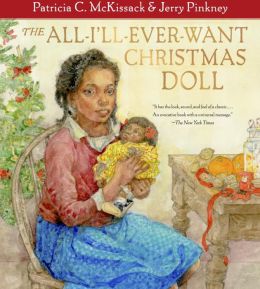
I haven't read The All-I'll-Ever Want-Christmas Doll in years. It was just as good as I remembered. The book is set during the Depression. A little girl, Nella, knows that her family is poor, that Santy may not come this year at all. Yet, she can't resist writing to him all the same begging for a Baby Betty doll. Her two sisters perhaps think a little less of Nella for her dreaming so big. She shouldn't expect so much from Christmas. But on Christmas morning, there are a few surprises. Each girl gets a Christmas sack filled with walnuts, peppermint candy, an orange, and a box of raisins. But there is one present, one special present remaining: a doll. Nella thinks the doll should be HERS and hers alone. After all, her sisters haven't gone around talking about the doll nonstop, her sisters didn't write Santa a letter begging for the doll. Why should she have to share the doll with them? But does the doll make her happy? Is the doll truly all she'll ever want? She has a few lessons to learn for sure!
I really enjoyed the story and the message.
The Bells of Christmas. Virginia Hamilton. Illustrated by Lambert Davis. 1989/1997. Houghton Mifflin Harcourt. 64 pages. [Source: Library] I didn't dislike Virginia Hamilton's The Bells of Christmas. But I didn't love, love, love it either. I think it depends on what exactly you're expecting from a Christmas book. The Bells of Christmas is very much a celebration of a Christmas long ago. Christmas 1890. Readers meet a young boy, Jason Bell, and experience the holiday through his perspective. We learn about his mom and dad, his brothers and sisters, his cousins, his aunt and uncle, his friend, Matthew. The book is set over a period of several days. Among the things readers learn that Jason's dad is a carpenter, that he wants his sons to join him in his business one day, his dad has only one leg, that his dad wears a peg leg part of the time and is in his wheel chair the rest of the time. Readers also learn that Jason is just a wee bit obsessed with wheels--mainly trains, but, also wagons, etc. The book has plenty of detail and characterization which is a good thing. Jason is waiting for quite a few things: 1) he can't wait for Christmas morning and presents! 2) he can't wait for the Bells to arrive--his uncle and aunt and cousins, 3) he is excited about church, most everyone is performing and participating in some way. (Jason is singing a solo.) The book perhaps seeks to capture one Christmas for one extended family. It is a pleasant, enjoyable book. It isn't quite a chapter book or novel. It isn't quite a picture book.
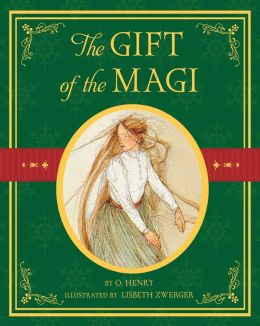
I've seen adaptations of The Gift of the Magi--who hasn't? (My favorite is Bert and Ernie and Mr. Hooper.) But this is the first time I've read the actual short story. I haven't decided how I feel about it. Is this couple wise or foolish? Or are they at times foolish and at times wise?
The wife, Della, takes extraordinary pride in her long hair. She doesn't seem the vain sort except for when it comes to her hair. And even if she is vain about it, there's no indication it's anything besides a private vanity. The wife apparently has been coveting expensive hair combs as well. The husband, Jim, takes extraordinary pride in the family watch. The narrator uses exaggeration when discussing the woman's long hair and the man's gold watch. I didn't love the narrator. In fact, I think the narrator is a distraction. He won't let the reader forget for a moment that this is a precious story.
Now, there were two possessions of the James Dillingham Youngs in which they both took a mighty pride. One was Jim's gold watch that had been his father's and his grandfather's. The other was Della's hair. Had the queen of Sheba lived in the flat across the airshaft, Della would have let her hair hang out the window some day to dry just to depreciate Her Majesty's jewels and gifts. Had King Solomon been the janitor, with all his treasures piled up in the basement, Jim would have pulled out his watch every time he passed, just to see him pluck at his beard from envy.
The wife can't afford a gift for her husband. The husband can't afford a gift the wife. The wife knows this--or should know this. The husband knows this--or should know this. The wife has saved $1.87. The husband might have saved a small sum as well. Readers don't know one way or the other. Both husband and wife will have something to offer the other, however. Something more than love. For both have decided--quite independently--to give sacrificially. To give up what they supposedly value most: her hair, his watch. And this giving up wasn't to support the family, but, to support the other's vanity.
I think actions can speak more than words. I think the narration took away some of my enjoyment of this one. It felt odd at times. There were sentences that were eloquent and refined and then it would slip into something else.
"It's sold, I tell you--sold and gone, too. It's Christmas Eve, boy. Be good to me, for it went for you. Maybe the hairs of my head were numbered," she went on with sudden serious sweetness, "but nobody could ever count my love for you. Shall I put the chops on, Jim?"
I think I like the adaptations better.
The Tailor of Gloucester. Beatrix Potter. 1903. 58 pages. [Source: Library] In the time of swords and periwigs and full-skirted coats with flowered lappets—when gentlemen wore ruffles, and gold-laced waistcoats of paduasoy and taffeta—there lived a tailor in Gloucester.
He sat in the window of a little shop in Westgate Street, cross-legged on a table, from morning till dark.
All day long while the light lasted he sewed and snippeted, piecing out his satin and pompadour, and lutestring; stuffs had strange names, and were very expensive in the days of the Tailor of Gloucester.
I enjoyed rereading Beatrix Potter's The Tailor of Glouchester. In this delightful Christmas tale, readers meet a tailor, a cat named Simpkin, and some lovely mice. It is several days before Christmas. He's working hard to finish a coat and waistcoat for the Mayor of Glouchester. The Mayor is getting married on Christmas day. The tailor has just enough money to finish the coat. Not a penny to spare. He sends his cat, Simpkin, with his money to buy what he needs: a little for himself (food: bread, sausage, milk) a little for his work (one twist of cherry-coloured silk). It is only after the fact that he questions whether he should have sent the cat or gone himself. The cat returns, but, in a mood. The cat is upset for he's discovered that the tailor freed the mice he had captured and hid under the teacups. The cat hides the twist. The man is upset, of course, and sick. He takes to his bed unable to work. The oh-so-thankful mice go to his shop and finish his work for him. But since they are one twist short, they are unable to finish completely. Still, they do what they can, and they do a wonderful job. The cat who spies them at work, I believe, has a change of heart and gives the twist to the old man on Christmas morning. He has just enough time to finish. The Mayor is very, very pleased. And the tailor's luck changes for the better, and his business is much improved. This one is a lovely, delightful read from start to finish.

I enjoyed reading Lucy's Christmas by Donald Hall. Lucy's Christmas is a picture book set in 1909 in New Hampshire. In the fall of 1909, Lucy and her family start preparing for Christmas. For Lucy, this means starting to make her own gifts for her family and friends. It pays to plan ahead since so many gifts take time, and thought must be placed into each gift. She's not the only one thinking ahead. This year the family is ordering a new stove for the kitchen. The family has spent a lot of time browsing in the Sears catalog. Lucy's choice is the one the family decides upon: the Glenwood Kitchen Range. The focus is not just on gifts: planning, making, giving, receiving. The focus is also on family life and community life. Readers get glimpses of the school and church. Both places are very busy! I enjoyed this glimpse into the past! It was interesting to see the family prepare for the new year--1910. The enthusiasm in the story is sweet. The author's note reveals that this picture book is based on family history.
I really liked this one very much. I liked Lucy and her family. I liked the fact that the church plays such a HUGE role in the Christmas celebrations. There are gifts, it's true. But it's not commercialized and selfish.
Baboushka and the Three Kings. Ruth Robbins. Illustrated by Nicholas Sidjakov. 1960/1986. Houghton Mifflin Harcourt. 32 pages. [Source: Library]Long ago and far away, on a winter's evening, the wind blew hard and cold around a small hut. Baboushka and the Three Kings won the Caldecott Medal in 1961. It is Russian folktale with a Christmas setting. The three kings--wise men--come to Baboushka's hut. They only stay a few minutes. Long enough to extend an invitation to the old woman. Will she join them in their procession, in their quest, to find the Babe, the Child? She'd love to join them, she'd love to bring gifts to the Child. But she is not ready to go just yet. Couldn't they all wait until morning? Couldn't they wait for her to finish up a few small, tiny chores first? Couldn't they wait for the storm to clear? Their answer was firm. Their journey to the Child was too important to postpone. They couldn't linger longer. She watched them depart. But they were not easy men to forget. The next morning, she begins a journey of her own. A journey that will take her far. But will her journey lead her to where she wants to go?
It's a simple story, nicely written. "It is no ordinary Babe they seek. Yes! I must go and follow them! To find the new Babe, to offer Him her gift, was now her one yearning. This thought burned in her mind like a candle in the dark." It is also nicely illustrated. The illustrations complement the text well. Both illustrations and text have a different flavor, an authentic flavor, but not exactly American. After several readings, I came to appreciate both a bit more.
In case you're unfamiliar with the story, the book is bittersweet at best. While it is true that Russian children everywhere look forward to Baboushka's gifts each year as her journey continues, it is also true that Baboushka's journey has no happy ending. She never finds the Child. She is never able to give Him her gifts.
Polar Express. Chris Van Allsburg. 1985/2009. Houghton Mifflin Harcourt. 32 pages. [Source: Library] The Polar Express is one of my favorite Christmas books. It is. The book is a thousand times better than the movie. (Though the soundtrack of the movie isn't bad.) So if you've only seen the movie, you might want to give the book a try to. You might have a different response to it.
The Polar Express is about belief and doubt--in Santa. It's told in the first person, so we never learn the protagonist's name, but it is a little boy with a younger sister named Sarah. One Christmas Eve, the little boy is awakened by The Polar Express. He goes to the North Pole on the Polar Express train, there are other passengers too. All presumably boys and girls on the verge of not-believing. At the North Pole, he sees Santa, reindeer, and elves. He happens to be chosen to receive the first gift of Christmas. He asks for a bell from Santa's reindeer. This gift is not in his possession for long, however, because he has a hole in his pocket. On Christmas day, he receives a special gift under the tree: the bell he had lost. He can hear it. His sister can hear it. But his parents do not. The book ends wonderfully with a message for "all those who truly believe."
I loved this one cover to cover, though I love the ending most of all. © 2014 Becky Laney of
Becky's Book Reviews
To Say Nothing of the Dog. Connie Willis. 1998. Bantam. 493 pages. [Source: Bought]
I have every intention of rereading all four Oxford time travel books by Connie Willis this year. Earlier in the year, I reread the first book,
Doomsday Book. To Say Nothing of the Dog, the second book, is a book I originally read and reviewed in
July 2009. While the first book offers drama, drama, more drama, with just a touch of humor now and then, the second book is a romantic comedy. I happen to love both books though they are very different from one another.
Ned Henry is the hero of To Say Nothing of the Dog. He is on a mission, not a mission of his own choosing perhaps, but a big mission all the same. He is one of many time travelers working for Lady Schrapnell on her latest project: restoring Coventry Cathedral. The novel opens with a very overworked Ned Henry beginning to show severe signs of time-lag. What he needs is rest, permission to rest. That isn't likely to happen if Lady Schrapnell learns his whereabouts. For better or worse, Ned Henry is sent to the past--to Victorian times--to recuperate. He's been given another mission too. This time by someone much nicer and calmer than Lady Schrapnell. The problem? Ned Henry wasn't capable of listening and understanding. Now he's in the past without a real clue of WHY he's there and what he's supposed to accomplish.
Verity Kindle is the heroine of To Say Nothing of the Dog. She is on a mission of her own. While Ned Henry was given the assignment of finding out the whereabouts of the bishop's bird stump, Verity's assignment is to read Tocelyn's diary. The diary is available to read in the future. But the most relevant pages to the Coventry Cathedral project were damaged. So she's been sent to the oh-so-important summer of 1888 to read the newly written diary entries. She's having about as much success as Ned Henry. In other words, not much luck at all! These two work together as best they can. Verity manages to travel back and forth a few times to the future. Their mission--as they see it has changed a bit. They worry that they've damaged the future and that something horrible may happen as a result. Like Tocelyn, they know, was supposed to marry a "Mr. C". They know this for a fact from future diary entries. Yet here they are and she's engaged to someone else! Their "new mission" is to find the identity of "Mr. C." and make sure they meet when they're supposed to meet....
I loved this one. I have always loved this one. It is a delightful time travel novel. I love the humor! I do! It's so very, very funny! And I love the details and the dialogue. This one is just a joy cover to cover!
© 2014 Becky Laney of
Becky's Book Reviews
Shipwreck at the Bottom of the World: The Extraordinary True Story of Shackleton and the Endurance. Jennifer Armstrong. 1998. Random House. 144 pages. [Source: Library]
Just imagine yourself in the most hostile place on earth. It's not the Sahara or the Gobi Desert. It's not the Arctic. The most hostile place on earth is the Antarctic, the location of the South Pole--what's the difference? The Arctic is mostly water--with ice on top, of course--and that ice is never more than a few feet thick. But under the South Pole lies a continent that supports glaciers up to two miles in depth. Almost the entire southern continent is covered by ice. The mammoth icecap presses down so heavily that it actually distorts the shape of the earth. The ice never melts; it clings to the bottom of the world, spawning winds, storms, and weather that affect the whole planet. I have read Jennifer Armstrong's Shipwreck at the Bottom of the World three or four times now. The narrative is so strong and compelling, and, yes, even inspiring. It is definitely one of my favorite nonfiction books. And nonfiction isn't something I usually take the time to reread.
Originally published in 1998, Shipwreck at the Bottom of the World won the Orbis Pictus Award in 1999. The book follows "the extraordinary true story of Shackleton and the Endurance." If you are unfamiliar with this story, then you really SHOULD read this one. It is a great introduction to the subject. Chapter by chapter, the book follows Shackleton and his men on their journey to Antarctica. Almost from the start, there are indicators that their goal, their quest, will not be an easy one to achieve. After a series of mishaps--thanks to nature--it becomes a long fight to survive. The story is simple and yet dramatic. I think the story would be gripping no matter who told it. But I do think that Jennifer Armstrong did a wonderful job in painting a very human picture of Shackleton and his crew. I think the ending was beautiful--very moving! This one is a book I think
everyone should read.
© 2014 Becky Laney of
Becky's Book Reviews
Love From Your Friend, Hannah. Mindy Warshaw Skolsky. 1998. DK. 246 pages.
September 27, 1937Dear Edward,I got your name and address from a piece of paper I picked out of a box that says Pen Pals on a corner of my teacher's desk. I've never done this before and I don't know exactly what to say. So I'll just pretend I'm talking. Hannah Diamond is the heroine of Mindy Warshaw Skolsky's Love From Your Friend, Hannah, a historical novel set in Grand View, New York in the 1930s. What should you know about Hannah? Well, she's a young girl who is missing her best friend, Aggie, who moved away. She's part of her classroom's pen pal program, but, she has DRAWN THE NAME OF A BOY! And since the teacher saw her draw his name, she can't put that piece of paper back to draw another name--no matter how much she wants to. Since her first letter to him is a total disaster, she decides to focus her energy on writing letters to other people. Surely she'll be able to find someone who wants to be friends...
Here is the disastrous reply from Edward:
Dear Hannah,
I haven't got a mountain.
I have a cow.
Edward Winchley
P.S. I don't like to read books. I don't like to write letters either. My teacher made me put my name on that piece of paper.
So who does Hannah decide to write? Well, her grandma, her aunt Becky, her best friend Aggie, and the President of the United States--Franklin D. Roosevelt, for starters...
The novel is composed of her letters to other people, and the letters she receives from other people.
I loved this one. I just LOVED, LOVED, LOVED it. I loved Hannah so very, very much!!! And I ended up just LOVING Edward!!!!
Hannah on reading:
My favorite thing in the world to do is read a book. I read Heidi, which I love, then I read another book, then I read Heidi again. If I stopped reading Heidi in between the other books, I'd be able to read twice as many books, but the thing is I like reading Heidi. So I do. (93)
Edward on reading:
Guess what I read for the second book the teacher said I had to read? Don't laugh. I read that one that you said you like so much. Heidi. Even though Heidi was a girl, you said there was a boy in it too. Peter. But you know what boy I liked the best? He wasn't a boy anymore. He was a grandfather--Heidi's grandfather. I would like to have Heidi's grandfather for a grandfather. I don't think he would bother me about talking or reading--or anything. (161)
Hannah on writing a book report:
Now, about the book report. I can't write it for you because your teacher would know just like you couldn't do my arithmetic because then my teacher would know. Teachers are like mothers--they always know!
But I can help give you some tips...
Tell the name of the book. Tell the name of the author. The Wizard of Oz was written by L. Frank Baum. Tell if you think he's a good writer. Tell the names of all the characters in the book. Tell what they did. Tell where they went. Tell who they were looking for. Tell what they finally found. Tell how they treated one another. Tell about their feelings. Tell that you read some to your sister. Tell that she liked it. Read some to a friend. Then you can even tell that your friend liked it. By that time, Edward, you'll have so many lines your teacher will leave you alone. (113)
Hannah to her Aunt Becky:
About finding me a present to make up for missing the movie, that was very nice of you. My mother said it'll be a consolat
Rules of the Road. Joan Bauer. 1998/2005. Penguin. 208 pages.
I leaped onto the sliding ladder in the back room of Gladstone's Shoe Store of Chicago, gave it a shove, and glided fast toward the end of the floor to ceiling shelves of shoeboxes.I love Rules of the Road. I think it is my favorite and best Joan Bauer book. (In case you haven't read her, you should! You really should! She's fabulous!) I read this one in pre-blog days, so this is my first opportunity to gush about how wonderful it is.
Jenna Boller, our heroine, has a part-time job selling shoes. And it's a job that she enjoys very much--especially on days when her drunk father doesn't show up at the store to embarrass her. So Jenna is quite surprised when Mrs. Gladstone, the owner of the Gladstone company, asks her to drive her across country to visit all her stores before the big meeting in August. Surprised because Jenna is relatively a new driver. Surprised because she could have hired anyone, confided in anyone. But these two have a way of bringing out the best in one another. And a wonderfully odd friendship begins. Together these two will cover many, many miles. They'll have many opportunities to discuss the meaning of life. (Not that they'd ever call it that, mind you!) Each woman has their own battle to fight. Mrs. Gladstone struggling to hold onto her company, fighting her greedy son and stockholders. Jenna struggling to deal with her life, her father. Does he have any place in her life? Should she work at forgiving him so she can move on with her life? Is the anger and anxiety worth it? How do you stop worrying though? How do you stop hating? How can you turn your feelings off and on? She has a dad-shaped hole in her life, and it's a hole that is hard to ignore...
I loved this one. I loved the characters. I loved the writing. I would definitely recommend it!
I thought of all the good drivers I'd ever seen, and I couldn't for the life of me figure out what made them that way. They just got behind the wheel, drove, and didn't run into things. The not running into things was important. (25)
Opal couldn't cope with my dateless state and kept trying to fix me up with sub-par guys like Morris, her second cousin twice removed, who, believe me, you want to be removed from at least twice. (31)
My grandma always said that people who snored were sleeping with enthusiasm. I tried to remember this, but there's just so much enthusiasm a person can handle in close quarters. (49)
I learned great road truths that teenagers aren't always exposed to.
Never go into a restaurant with a sign that says GOOD EATS.
Never eat at a place called MOM'S, because it's a safe bet Mom's been dead for years and whoever's in the kitchen didn't have a working relationship with her.
If you see four or more pickups in front of a diner, chances are you'll get a good meal. (113-4)
"I thought people in Texas were laid back," I shouted as two mega-trucks thundered by.
"They are," Mrs. Gladstone said happily, "except on the road." (121)
My grandma always said that God made libraries so that people didn't have any excuse to be stupid. Close to everything a human being needed to know was somewhere in the library. There was plenty I needed to know. (142)
It's the little things, not just in selling, but in life that make the difference. The small moments when you can touch another person. Harry Bender was always looking for them and he found more than any person I'd ever met. (146)
Shipwreck at the Bottom of the World: The Extraordinary True Story of Shackleton and the Endurance. Jennifer Armstrong. 1998. Random House. 144 pages.
Just imagine yourself in the most hostile place on earth. It's not the Sahara or the Gobi Desert. It's not the Arctic. The most hostile place on earth is the Antarctic, the location of the South Pole--what's the difference? The Arctic is mostly water--with ice on top, of course--and that ice is never more than a few feet thick. But under the South Pole lies a continent that supports glaciers up to two miles in depth. Almost the entire southern continent is covered by ice. The mammoth icecap presses down so heavily that it actually distorts the shape of the earth. The ice never melts; it clings to the bottom of the world, spawning winds, storms, and weather that affect the whole planet.Shipwreck at the Bottom of the World is an amazing survival story. Against all odds, these men--twenty-eight in all--led by Ernest Shackleton survived the harshest conditions imaginable. Of course, when these men set sail they had big dreams. They wanted to become the first team of explorers to cross Antarctica. But life doesn't always go as planned. And when their ship became trapped by ice, their mission changed. To survive was all that mattered.
I loved this book. I did. There is a very good reason it won the Orbis Pictus Award for Outstanding Nonfiction. It fascinates from cover to cover. Amazing writing--storytelling. The book is so engaging, so compelling, so powerful, so amazing. I think the story would be gripping no matter who told it. But I do think that Jennifer Armstrong did a wonderful job in painting a very human picture of Shackleton and his crew. I think the ending was beautiful--very moving! This one is a book I think
everyone should read.
© Becky Laney of
Becky's Book Reviews

These Is My Words: The Diary of Sarah Agnes Prine. By Nancy E. Turner. 1998. HarperCollins. 416 pages.
A storm is rolling in, and that always makes me a little sad and wistful so I got it in my head to set to paper all these things that have got us this far on our way through this heathen land.
These Is My Words is the fictional diary of a young woman, Sarah Prine, living (mostly) in the Arizona Territory in the 1880s and 1890s. Sarah's life is anything but easy.
Readers learn this from the start. Within the first twenty or so pages, Sarah experiences loss after loss after loss. A younger brother dying by snakebite. Another brother being shot and having to have his leg amputated. Indians attacking the wagon train the Prine family is traveling with. With multiple deaths there. Including her father--though his death isn't immediate. Witnessing the brutal rape of a friend. But Sarah isn't weak. She isn't one to give up with a fight. For example, witnessing the rape leads her to sneak away, get her gun, and shoot the attackers dead.
Sarah is an incredibly strong heroine. Circumstances forcing her time and time again to be strong, brave, independent. To think on her feet. To fight for herself. To fight for her family. To fight for her land.
The novel covers twenty years. Readers see Sarah grow and develop. We see her as a daughter, a sister, a wife, a mother, a widow. We see her disappointed with life, with love. We see her courage as she chooses to love again. Sarah is a woman who doesn't give up. She's got plenty of gumption.
There is something raw and spirited about These Is My Words. I found These Is My Words to be compelling.
Here are a few of my favorite passages:
Taking up marriage is a good excuse for taking up cursing, I think. (248)
Children are a burden to a mother, but not the way a heavy box is to a mule. Our children weigh hard on my heart, and thinking about them growing up honest and healthy, or just living to grow up at all, makes a load in my chest that is bigger than the safe at the bank, and more valuable to me than all the gold inside it. (303)
One of my favorite scenes is when Sarah exhausted by her work and her children confronts her soldier husband.
All day long I had been at my wit's end alone with these children, and just barely heated up some scraps of beef from yesterday and put in a little vegetable to make a stew, when here came Jack with Blue Horse and some other soldier I don't even know as company for dinner, and on top of that asked me to cut his hair and draw him a bath as he was too tired to haul the water.
I am ever thankful that soldier took one look at me showing with a baby coming along, with my hair falling down, and the broom lying at a mound of broken glass, and supper boiling over on the stove, April wearing a dirty pinafore screaming for me to hold her, and just then the baby in my arms spit up all over me, and he said, You know, Captain Elliot, I forgot to rub down my horse, but I'd be kindly obliged if you'd let me have supper some other time.
When he left, I turned to Jack Elliot and said, If you are too tired to haul water, you are too tired to bathe in it, and I am fit to be tied. Your supper is on the stove and your children are driving me to distraction and April has lost the scissors under the house through a crack in the floor so there will be no haircut tonight. If that don't please you, then I will put on a uniform and ride out of here tomorrow morning and chase around the countryside and you can wear this apron and tend these crying ch

By:
Becky Laney,
on 2/10/2010
Blog:
Becky's Book Reviews
(
Login to Add to MyJacketFlap)
JacketFlap tags:
1998,
family,
YA Fiction,
adoption,
J Fiction,
YA realistic fiction,
coming-of-age,
Simon and Schuster,
J Realistic Fiction,
library book,
Add a tag
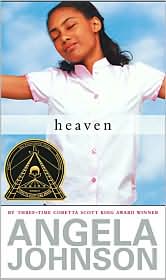
Heaven. By Angela Johnson. 1998. Simon & Schuster. 144 pages.
In Heaven there are 1,637 steps from my house to the Western Union.
Meet Marley. She's our fun-loving heroine whose world is about to get a little shaky when she discovers that her parents haven't been telling her the whole truth about her life, about who she is.
Marley has lived most of her fourteen years in Heaven, Ohio. And, for the most part, she's loved it. She's got her friends Shoogy, Bobby, and Feather to keep her company. Plus her family. But one day, one letter changes everything. Puts everything into question. At least in Marley's mind. Can Marley find her way again? Can she find a way to accept these new truths? Will she find a way to forgive her parents?
This coming of age story is well written, in fact it won the Coretta Scott King Award.
© Becky Laney of Becky's Book Reviews
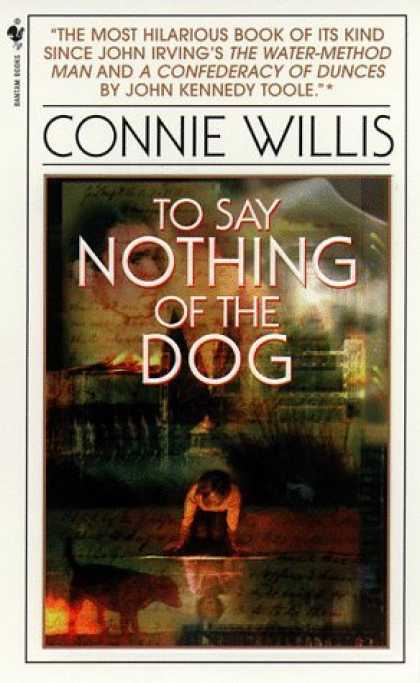
Willis, Connie. 1998. To Say Nothing of the Dog. 493 pages. (Hugo Award)
Read this book. That's all I have to say about that. No, not really. I have plenty to say about this one. But I don't think my review will be able to do this one justice. What is To Say Nothing of the Dog? It's a funny sci-fi mystery with a smidgen of romance.
I have a weakness for time travel. I do. And this one is a great example of a time-traveling sci-fi novel that just works really well. It's smart. It's funny. It keeps you reading. It is impossible to put down most of the time. (Trust me on that. Not that I can ever really regret staying up past 3:30AM to finish it, but I do wish I'd started it earlier in the day.)
Our hero is Ned Henry. He's a time traveler. That's his job. (Though I think it would be a cool job to have, Henry seems to find it a bit stressful. And once I got an up close glimpse of his boss, I could see why he feels that way. But still. It's time travel.) Right now his mission is to find out what happened to the bishop's bird stump that disappeared from Coventry Cathedral during the chaos of World War 2. (The church was destroyed during a bombing raid in 1940.) Henry's boss, Lady Schrapnell, is intent on restoring the cathedral down to the last little detail. And she wants this mystery solved. So much that she's hired dozens and dozens and dozens of people to travel back through time trying to find the answer. Was this bishop's bird stump still in the cathedral the day it was bombed? Should it be part of the restored cathedral?
But isn't so much time travel dangerous? Just a wee bit dangerous at least? What if something important is inadvertently changed? True, it's supposed to be self-correcting with built-in security to prevent such events, but still.
The truth of the matter is there are a few problems going on. And no one is quite sure why, they just know that someone, somewhere must have done something. Not very helpful, huh? Henry doesn't think so either. He's a bit disoriented, but he's been instructed to go to 1888 and 'fix' something that's gone wrong. Much of the novel is spent in Victorian England--Henry meets fellow time-traveler, Verity Kindle, there. She's posing as Tocelyn's cousin and hoping to get her hands on Tossie's diary. (Tocelyn is a great-great-great-great-great something or other to Lady Schrapnell. It was by reading this diary that she became inspired to restore the cathedral in the first place.) But when Henry arrives, Tossie is not only not interested in visiting the cathedral, she's flirting with the wrong man. She's "destined" (to our time line at least) to marry a Mr. C. Can Verity and Ned coax her to visit the cathedral in time and meet her future husband?
I definitely recommend this one. It's a funny take on both traditional science fiction novels and traditional mysteries. I think almost anyone would enjoy this one.
© Becky Laney of Becky's Book Reviews

Dessen, Sarah. 1998. Someone Like You. Penguin. 281 pages.
I loved this book. I did. If you haven't read Sarah Dessen, you really should. Dessen, in many ways, is in a class all her own. There's the typically-delightful reading of a YA romance. (Something that I do a good bit of. And I enjoy almost everything in varying degrees.) And then there is the oh-so-wonderful-and-satisfying reading of a Dessen YA romance. There's just something about her work that is better, deeper, fresher. (I don't think awesomer is a word.)
In Someone Like You, we've got our heroine, Halley, and her best friend, Scarlett. When the novel opens, Halley is at summer camp when she gets the call that Scarlett's boyfriend, Michael, has just died. And so this often raw always emotional story begins. A story of friendship and love as Halley helps her friend through this trying time but also of loss and confusion as Scarlett discovers that she is pregnant and decides to keep the baby for better or worse. But this isn't just a story of Scarlett's life, of Scarlett's troubles. No, Halley has a life of her own. And her junior year is getting off to a weird--but wonderful--start when she begins falling for Michael's best friend (and ever-so-bad-bad), Macon. As her own relationship gets started, she's ever-questioning her life and love. Is she ready to go all the way? Does Macon love her even if he never says he does? Is she ready to open up herself to that kind of risk? Not only the risk of pregnancy, but the risk of having her heart trampled on by a boy who is more elusive than not. How much does she really know about him? about herself?
The story is compelling. It's masterfully told by Dessen.
Some of my favorite bits:
When I think of Michael Sherwood, what really comes to mind is produce. (41)
Halley's first conversation with Macon (which happens while they're waiting to speak to the school counselor.) He's in trouble; she's looking to change her schedule.
"Now, you know how to handle yourself in there, right?"
I looked at him. "What?"
"How to handle yourself," He blinked at me. "Oh, please. You need big help. Okay, listen up. Firs, admit nothing. That's the most important rule."
"I'm not in trouble," I told him.
"Second," he said loudly, ignoring me, "try to divert them by mention anything about your therapist. For instance, say, 'My therapist always says I have a problem with authority.' Act real serious about it. Just the word 'therapist' will usually cut you some slack."
I laughed. "Yeah, right."
"It's true. And if that doesn't work, use the Jedi Mind Trick. But only if you really have to."
"The what?"
"The Jedi Mind Trick." He looked at me. "Didn't you ever see Star Wars?"
I thought back, "Sure I did."
"The Jedi Mind Trick is when you tell someone what you want them to think, and then they think it. Like, say I'm Mr. Mathers. And I say, "Macon, you're already pushing the limits and it's only the first day of school. Is this any kind of way to start the year?' And you're me. What do you say?"
I shook my head. "I have no idea."
He rolled his eyes. "You say, 'Mr. Mathers, you're going to let this slide, because it's only the first day, it was an honest mistake, and the fire got put out as quickly as it was started.'"
"The fire?" I said. "What fire?"
"The point is," he said easily, flipping his hand, "that you just say that right back to him, very confidently. And then what does he say?"
"That you're crazy?"
"No. He says, 'Well, Macon, I'm going to let this slide because it's only the first day, it was an honest mistake, and the fire got put out as quickly as it started.'"
I laughed. "He will not."
"He will," he said, nodding his head. "It's the Jedi Mind Trick. Trust me." And when he smiled at me, I almost did. (54)
© Becky Laney of
Becky's Book ReviewsIf you're reading this post on another site, or another feed, the content has been stolen.
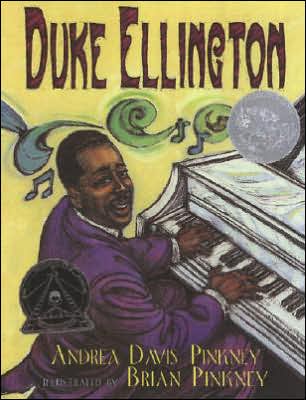
Pinkney, Andrea Davis. 1998. Duke Ellington: The Piano Prince and His Orchestra. Illustrated by Brian Pinkney.
I loved this picture book biography of Duke Ellington. The illustrations were great--and I'm not alone in thinking that, the book was honored with a Caldecott Honor in 1999. The text was great too. The style was very original--smooth, jazzy, rhythmic. The facts were all there, yes, but they were dressed up nicely by the language, the words she chose to use to tell her story. She's a natural storyteller and it shows.
Here's how it begins,
You ever hear of the jazz-playin' man, the man with the cats who could swing with band? He was born in 1899, in Washington, D.C. Born Edward Kennedy Ellington. But wherever young Edward went, he said, "Hey, call me Duke." Duke's name fit him rightly. He was a smooth-talkin', slick-steppin', piano-playin' kid...
Here's another example,
But with practice, all Duke's fingers rode the piano keys. Duke started to play his own made-up melodies. Whole notes, chords, sharps, and flats. Left-handed hops and right-handed slides. Believe it, man. Duke taught himself to press on the pearlies like nobody else could. His one-and-two-umpy-dump became a thing of the past. Now playing the piano was Duke's all-time love.
Well-researched (she even shares her bibliography with readers) the book is a great example of an accessible, thoroughly readable biography meant to be read and enjoyed.
© Becky Laney of Becky's Book Reviews



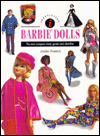
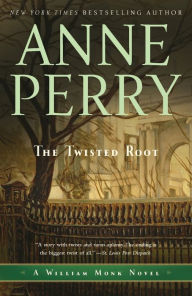

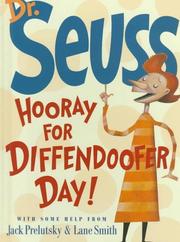
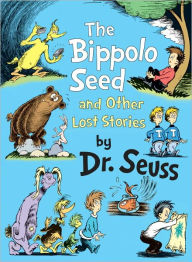

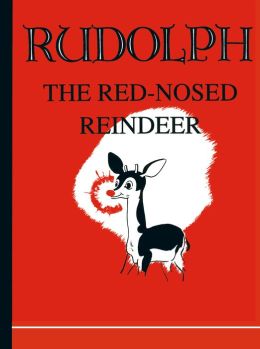
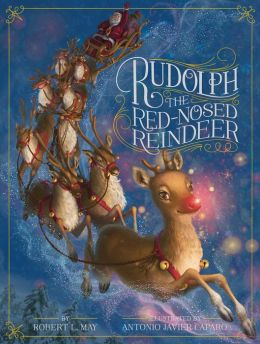
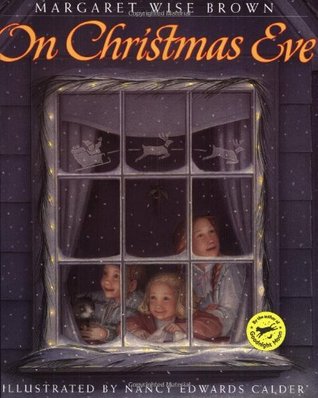
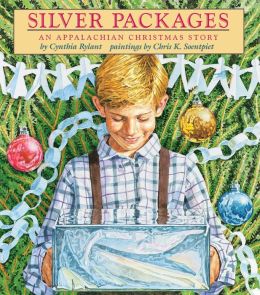

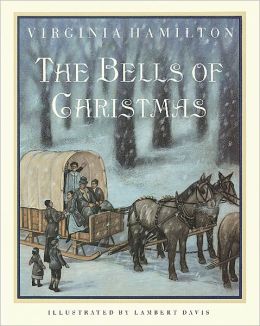

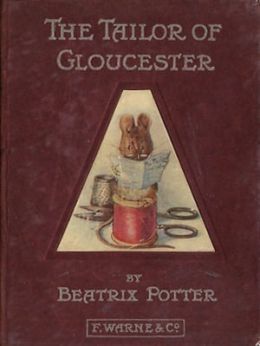



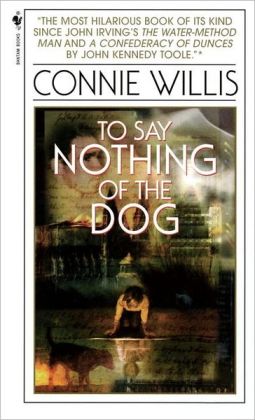
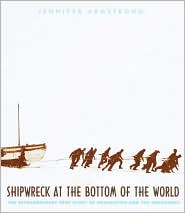







Not surprisingly, I also loved sewing Barbie clothes. My cousin was older, so she had an original doll, and I loved looking at the clothing catalogs she had for her! Haven't thought of Barbies in years-- my daughters had no interest in them whatsoever!
I miss the 80s and 90s too. My sister and I were big fans of Barbies. We loved creating personalities for them and playing out dramatic storylines. (We were not as into the fashion.) Sadly, I don't think my daughters will have Barbies. The newer ones are just not the same.
For me it was definitely both. I loved playing with the dolls. Most were fully developed characters with likes, dislikes, strong opinions, and unique style. To this day my sister and I can see something or hear something and go, "That's so Scarlett, or that's so Carrie."
The 80s and 90s were the best. I think the somewhat recent decision to make every single Barbie doll have the exact same face was a huge, huge mistake. Why would you ever need more than one--or two?! And what's the fun of playing Barbies if you just have one or two?! And store-bought clothes are so expensive it's ridiculous. (Hence why I made my own clothes for them. I had about four or five patterns from the late 70s to early 80s. And occasionally--I'd buy new patterns. I think by the end, I had about ten or twelve patterns.)